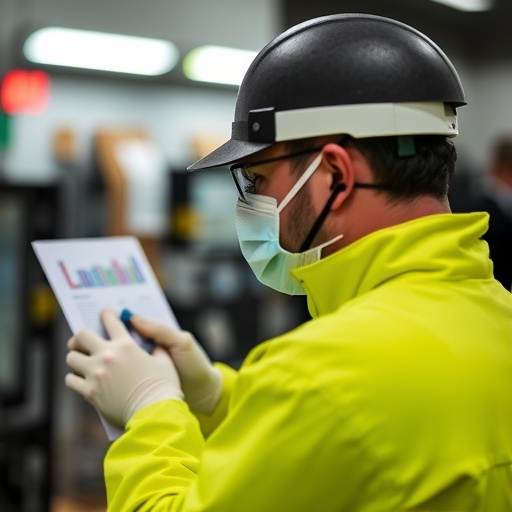
Credit: The Scripps Research Institute
Scientists from the Florida campus of The Scripps Research Institute (TSRI) have discovered how a protein called α2δ4 establishes proper vision. Their research helps explain why mutations in the gene encoding α2δ4 lead to retinal dystrophy, a disease characterized by defective color vision and night blindness.
To study how this protein supports vision, the researchers modeled retinal dystrophy in mice. Like humans, mice lacking α2δ4 succumbed to the disease and their vision was compromised.
"Much of our work is driven by desire to understand what goes awry in a range of blinding conditions," explained TSRI Professor Kirill A. Martemyanov, senior author of the new study. "Now we have found a molecule that plays a key role in allowing photoreceptors to plug into the neural circuit and transmit the light signals they receive to the brain."
The study was published online recently in the journal Neuron.
A Secret Ingredient for Vision
Our vision depends on two types of photoreceptors in the light-sensitive layer of eye called the retina. Rods photoreceptors detect photons at the lowest levels of light and support night vision, and cone photoreceptors sense bright light and discriminate between colors. Both rods and cones must wire into a neural circuit of the retina to send information to the brain.
Martemyanov and his colleagues are studying the neural connections that make vision possible. In a previous study, the researchers identified a novel cell-adhesion protein called ELFN1 that rods use for making contacts with their partners, called bipolar neurons. However, how ELFN1 accomplishes the task of photoreceptor wiring was not clear.
In the new study, experiments spearheaded by TSRI Research Associate Yuchen Wang of the Martemyanov laboratory showed that this connectivity requires α2δ4 to join a structure, called a higher order macromolecular complex, with ELFN1 and other proteins called calcium channels. These calcium channels trigger the release of the chemical messenger glutamate, which photoreceptors use for communicating with bipolar neurons.
In short, Wang explained, without both α2δ4 and the other calcium channels in the macromolecular complex, rods cannot connect to the neural circuit. "We found that α2δ4 is essential for organizing the presynaptic compartment of rod photoreceptors," he said.
Strikingly, eliminating the corresponding gene for α2δ4 in a mouse model interrupted the transmission of light signals from photoreceptors to the brain without affecting the ability to detect light. "It's like you are trying to make a phone call–and your phone is fully functional–but you are not heard because there is no signal," Martemyanov said.
Cones seemed to handle the lack of α2δ4 only slightly better.
Without the α2δ4, mice failed to see under dim light conditions and could not navigate a maze in low light due to their dysfunctional rods. Their cones were affected too, but they could still send some weak signals through to the brain.
"Their dim-light vision was completely abolished," said Martemyanov. "And the signal from the cones could barely make it." Wang said the researchers are doing more research now to account for this difference between rods and cones.
A Potential Way to Keep Eyes Healthy
Going forward, Martemyanov and his team plan to study whether manipulating α2δ4 could help photoreceptors transmit their signals and maintain connectivity to stay functional longer in models of age-related vision loss, a major blinding condition in humans.
"If we can entice dying photoreceptors to augment their communication with the retina circuitry and preserve the connections they make, we can likely delay the loss of vision in degenerative conditions like age-related macular degeneration," Martemyanov said.
The researchers also think that wiring factors such as α2δ4 and ELFN1 could also help researchers address a current challenge in using stem cells to correct vision loss.
Martemyanov explained that current efforts of many laboratories are currently directed towards replacing dead photoreceptor cells with stem cell-derived rods and cones as a strategy to restore vision; however, integrating the new photoreceptors into the retina circuit has been a challenge. The new study suggests that α2δ4 may be the secret ingredient for getting these new cells to properly wire into the neural circuit.
###
In addition to Martemyanov and Wang, authors of the study, "The Auxiliary Calcium Channel Subunit α2δ4 Is Required for Axonal Elaboration, Synaptic Transmission, and Wiring of Rod Photoreceptors," were Yan Cao, Ignacio Sarria, Ben Throesch and Kristin Baldwin also of TSRI; Katherine E. Fehlhaber, Norianne T. Ingram and Alapakkam P. Sampath of the Jules Stein Eye Institute, University of California, Los Angeles; Debbie Guerrero-Given and Naomi Kamasawa of the Max Planck Florida Institute for Neuroscience; and Toshihisa Ohtsuka of the University of Yamanashi.
The study was supported by the National Institutes of Health (grants EY018139, EY017606 and EY000331) and an Unrestricted Grant from Research to Prevent Blindness to the Stein Eye Institute, University of California, Los Angeles.
About The Scripps Research Institute
The Scripps Research Institute (TSRI) is one of the world's largest independent, not-for-profit organizations focusing on research in the biomedical sciences. TSRI is internationally recognized for its contributions to science and health, including its role in laying the foundation for new treatments for cancer, rheumatoid arthritis, hemophilia, and other diseases. An institution that evolved from the Scripps Metabolic Clinic founded by philanthropist Ellen Browning Scripps in 1924, the institute now employs more than 2,500 people on its campuses in La Jolla, CA, and Jupiter, FL, where its renowned scientists–including two Nobel laureates and 20 members of the National Academies of Science, Engineering or Medicine–work toward their next discoveries. The institute's graduate program, which awards PhD degrees in biology and chemistry, ranks among the top ten of its kind in the nation. In October 2016, TSRI announced a strategic affiliation with the California Institute for Biomedical Research (Calibr), representing a renewed commitment to the discovery and development of new medicines to address unmet medical needs.
For more information, see http://www.scripps.edu.
Media Contact
Madeline McCurry-Schmidt
[email protected]
858-784-9254
@scrippsresearch
http://www.scripps.edu
############
Story Source: Materials provided by Scienmag




